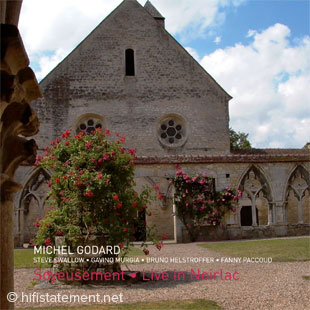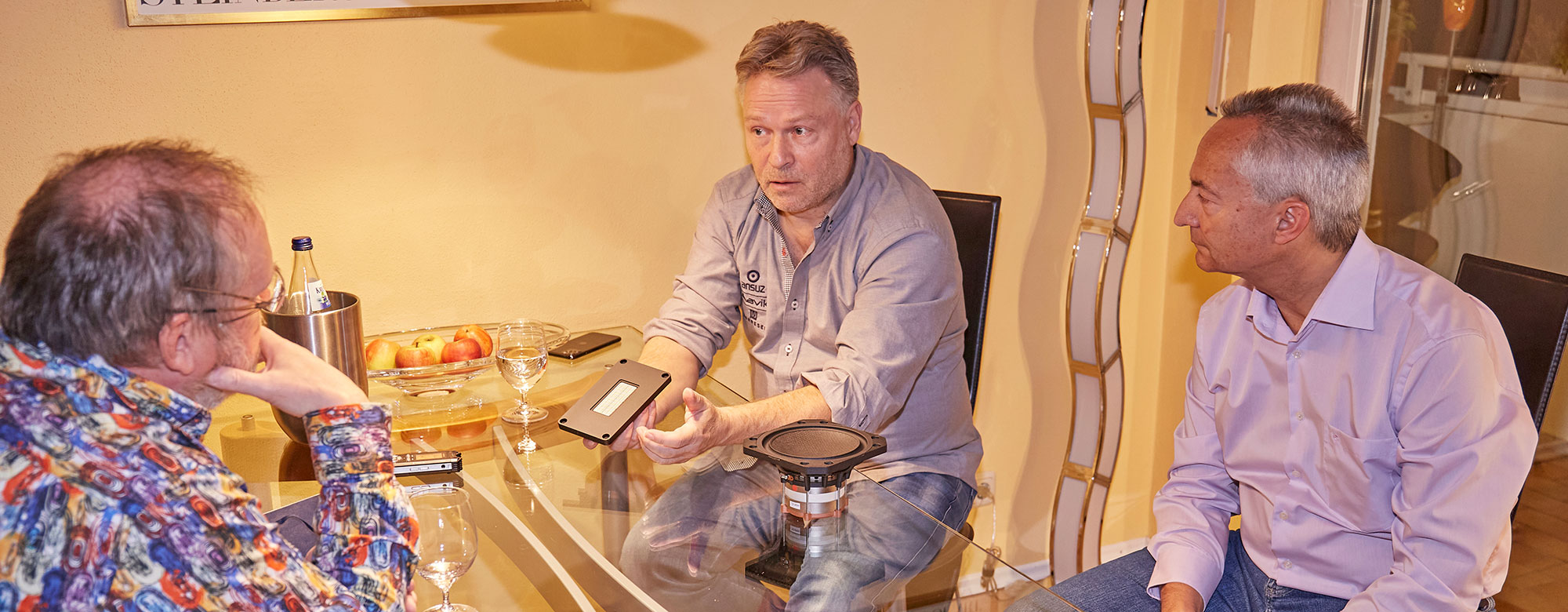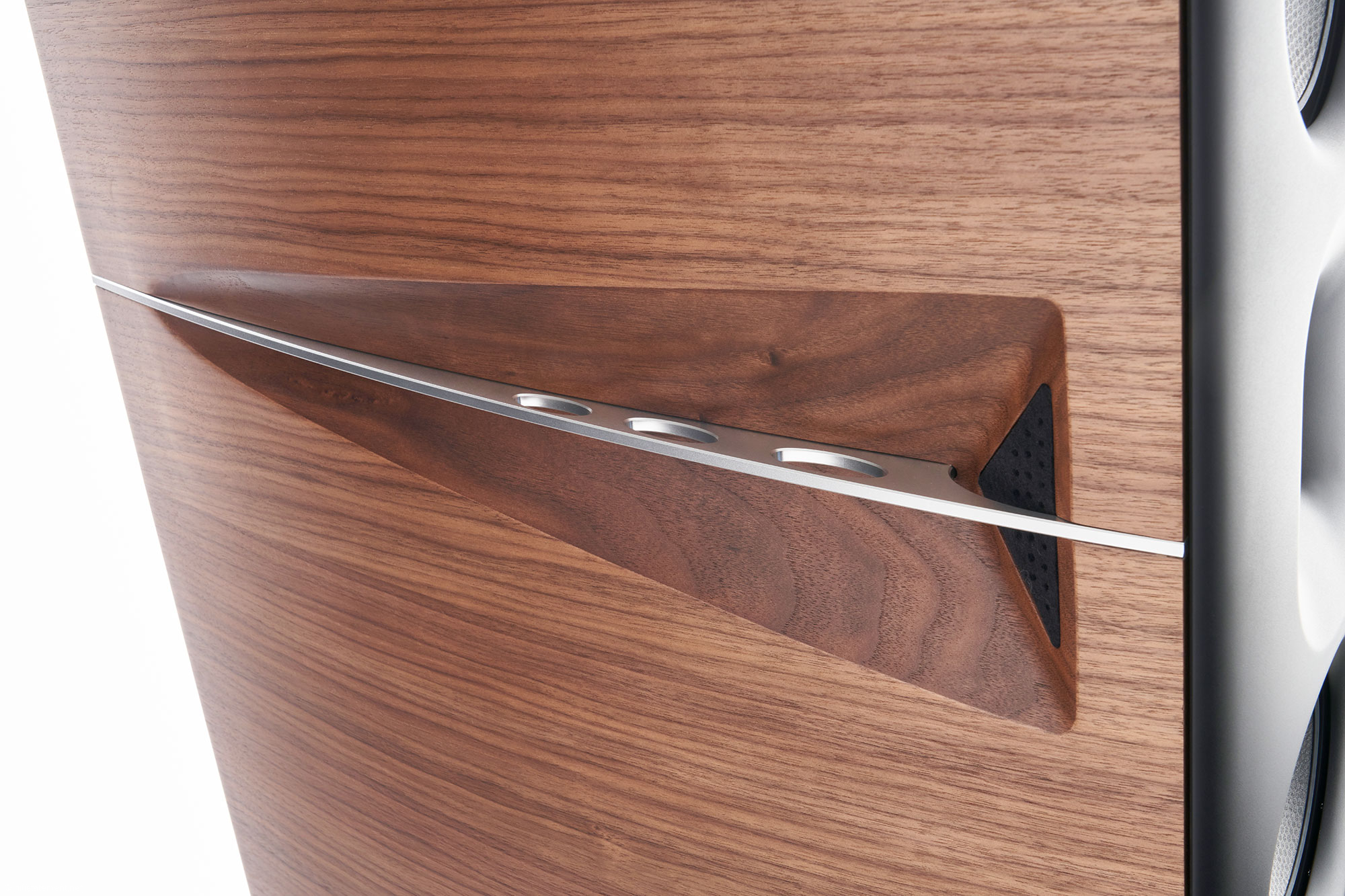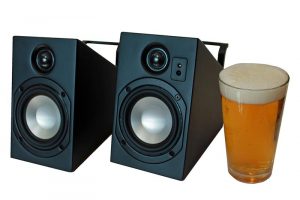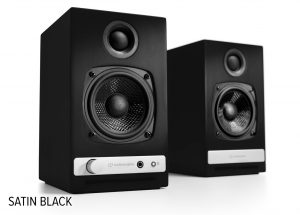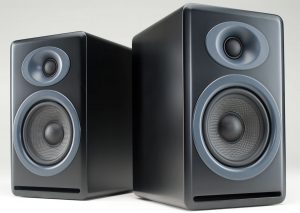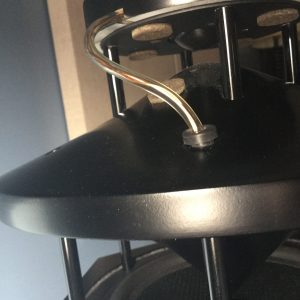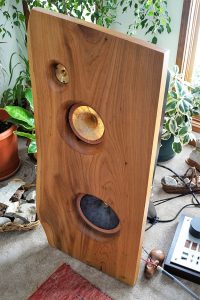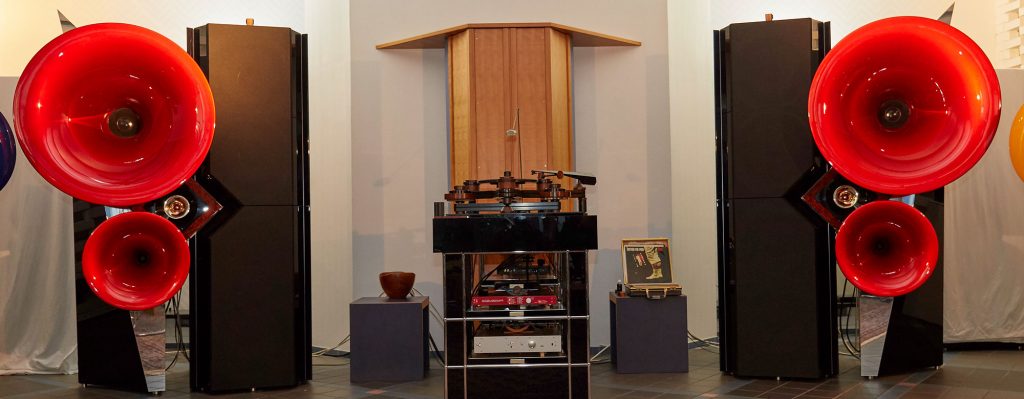
Three years ago, while visiting Acapella's showroom in Duisburg, I experienced that a Poseydon could bring you closer to the dynamics of a concert event than even the most demanding hi-fi enthusiast could have ever dreamed of. And, the acoustic transducer currently being there in demonstration is intended to narrow the gap between reality and illusion even more. And you can listen to it by yourself!
In the meantime, a lot has happened at Acapella Audio Arts: Besides Hermann Winters and Alfred Rudolph, also his sons Robert and Richard are now part of the team, while the legal structure of the company has changed accordingly. Richard Rudolph has now been involved in research and production for well over ten years, and with the current Sphäron Excalibur he has played a decisive role in the further development of Acapella's top model.
Understandably, these systems are only built to order, incorporating the latest insights from the constant quest for a continuously improving performance. In contrast to the early Sphäron models, the current system does not require a bass horn acoustically coupling to the room anymore. While for the earlier solution a horn area of twelve square meters was indispensable, the current model shows up with modular, more than head-high bass columns. Each of the four modules, following the vented enclosure principle, features an 18-inch driver.
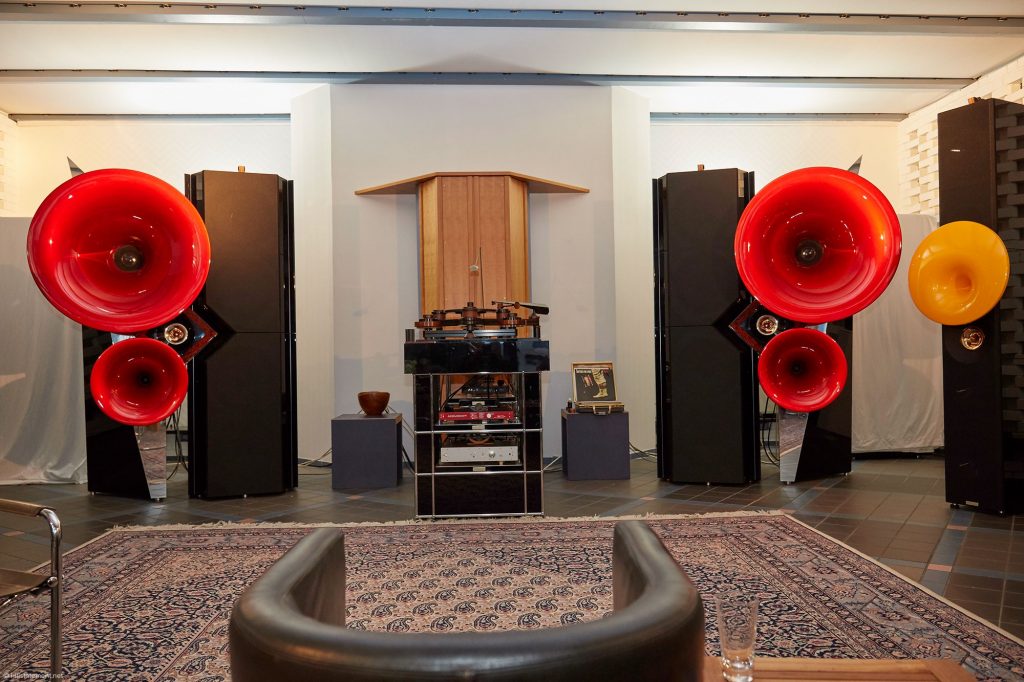
The chosen stereo width in combination with the shown distance to the listening position is more than sufficient to create the completely credible illusion of a solo artist, a wall of sound from a rock band or a symphony orchestra in a concert hall
The system also includes Acapella's proprietary mono power amplifiers, derived from their integrated amplifier LaMusika and their three-phase powered stereo power amplifier. However, there is "only" one mono block per channel, integrated in the speaker cabinet on a suspended base. The assignment of the frequencies to the woofer modules, the low-midrange, and the high-midrange horns, as well as to the ion tweeter is effected by a passive crossover. When asked about the power rating of the power amplifier, Hermann Winters answers—almost as expected—in the classic manner very much known from Rolls Royce: perfectly adequate. Technical questions he simply considers to be inappropriate: They don't reveal anything about the sonic properties and the musicality of this exceptional speaker system. Whereas he willingly quenches the thirst for knowledge related to the system's weight, although before it comes to transport, this question can't clearly be answered: A Sphäron isn't something you simply lift onto a balance. The estimated weight ranges between 650 and 750 kilograms per side.
A direct comparison between the Sphäron and the Poseydon, which impressed me so positively on my last visit, won't be realizable, as the Acapella team dismantled it to make room in the generously dimensioned listening room for the new things to come. But a snappy comparison certainly would not do the Sphäron Excalibur justice. But already with the first track, a song by Nils Lofgren, with which Richard Rudolph started the audition, their achievement is unveiled: it's instantly powerful and impressive, but also bigger than live. However, I don't know if it was because Richard Rudolph minimally reduced the volume or if I, as usual, had closed my eyes for focused listening: Suddenly the proportions snap in. While the imaginary stage charms with its spaciousness, the enormously differentiated instruments and voices perform in an absolutely harmonious and dimensionally lifelike manner, letting you indulge fully relaxed in a wealth of information. Already this first song—being up to now unknown to me and technically not necessarily an audiophile masterpiece—gives rise to my worst fears: If I do not stop being captivated by the Sphäron Excalibur right now, I will never be able to listen to music through my own system as satisfied as before.
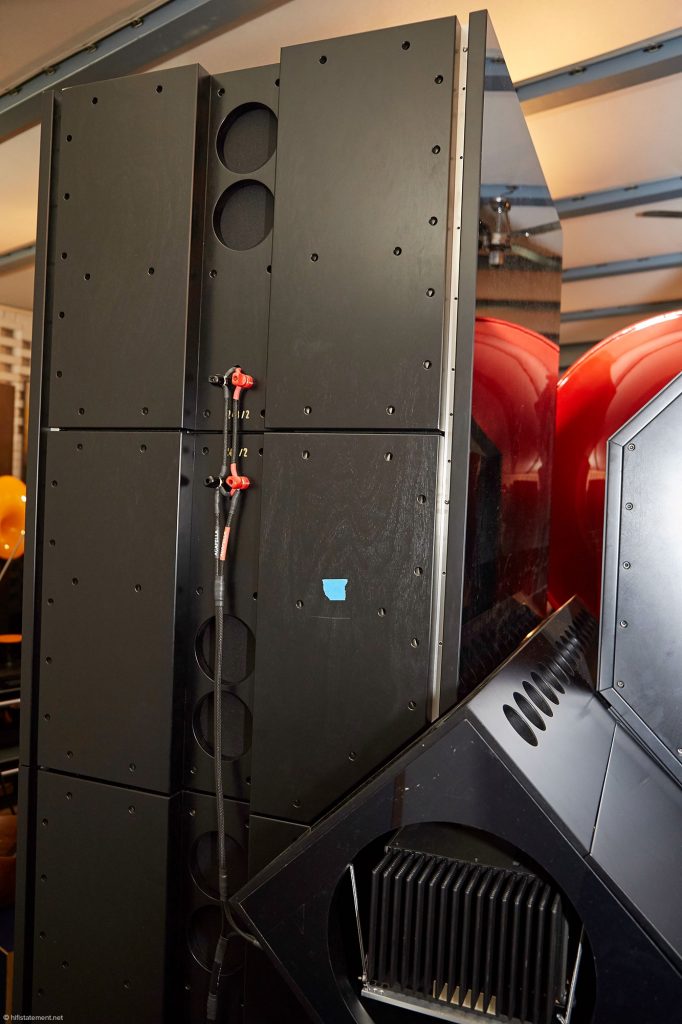
The woofer modules as seen from the rear
But let's put any scaremongering aside. Ultimately, I traveled to Duisburg to chronicle this state-of-the-art speaker system to you, my readers. And my description is certainly not intended to stoke your jealousy. Prior to their trip to China, Hermann Winters expects the Sphärons to be around for listening at the Audio Forum at least till the early months of 2020. Until then, you may have the unique opportunity to experience this speaker system by yourself and redefine your standards in regard to realistic audio performance. Acapella's studio is open to public two days a week, but nevertheless, I would strongly recommend a phone reservation. The fact that the active Sphärons are mainly responsible for this most likely unparalleled sonic outcome is proven by looking at their teammates. This time around there isn't a master tape run on a Telefunken M15, resonance-optimized by Alfred Rudolph for both recording and playback as it was three years ago when listening to the Poseydon, but The Audio One streamer, manufactured for Acapella by ReQuest, adding to the bill with only slightly more than one percent of the price of the Sphäron.
Currently not even all functions of The Audio One are in use. Instead of its analogue outputs, one of the digital outputs is connected to the rest of the system: A prototype developed in cooperation with Artistic Fidelity—or better, Ralf Koschnicke—assumes the functions of D/A converter and preamp. The converter section of Acapella's DAC/preamp combo is similar to that of the arfi-dac2xt, which has been already highly acclaimed for its sonic qualities as well as for its tremendously customer-friendly price-performance ratio. Only the currently used analogue source, the LaMusika Laudatio, is as rare as the Sphäron itself, and also ranging in the exclusive realms of high-end pricing. So, for most of the following sonic descriptions, these acoustic transducers therefore require neither master tapes nor absolutely priceless teammates. And, most of the files we listened to had a resolution of a mere 16-bit and 44.1 kilohertz.
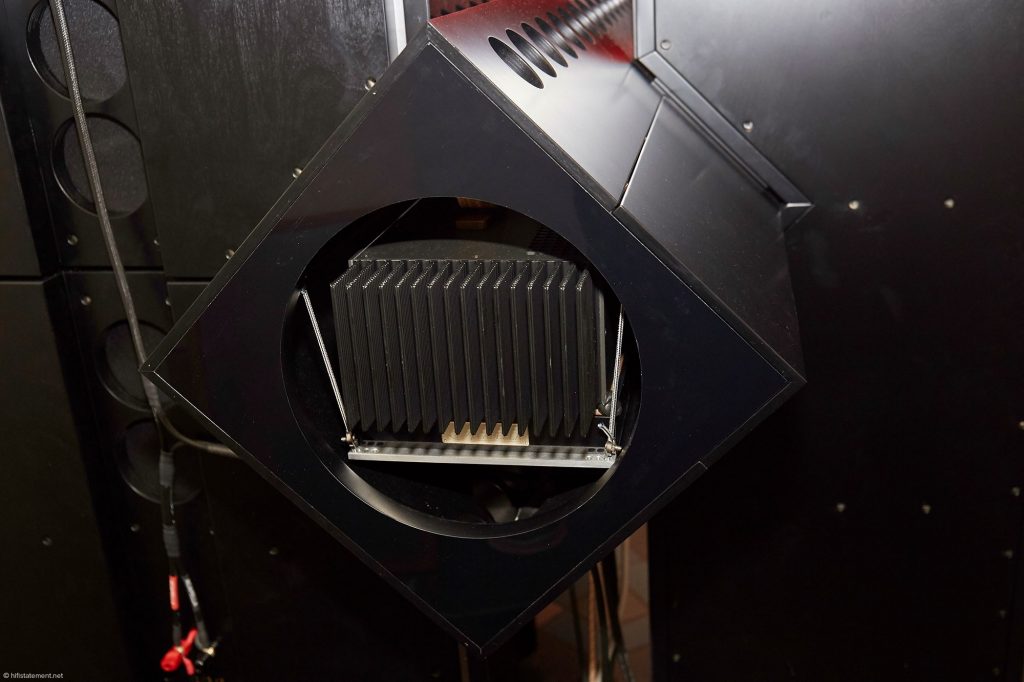
In the back of the ion tweeter's enclosure, a suspended base for the mono power amp has been installed
While some of my test albums make their way to the server via LAN, Hermann Winters takes on the role of the iPad-DJ. He starts with an old recording from A&M, "Top Of The World" by The Carpenters. As the well-known melody happily burbles along, you can very much concentrate on the tonal aspects of the song. For example, it never struck me previously how much pressure and realism the bass drum had been captured in the recording. The Sphäron allows to take a good listen into the—virtual?—depth of the recording studio, and to rejoicingly capture the perspective of the convincing arrangement of the well-differentiated instruments. If you only know the song from being played on the radio, it's almost frightening how much information is abundantly included within this stroke of recorded luck. But to find your way into this kind of detail depth, it really requires such a highly-resolving acoustic transducer like the imposing Excalibur. Instead, what you surely can forego is a high or even elevated volume level. To me, it's absolutely amazing how the Sphäron manages to trace the played content down to finest detail even at moderate volume levels. Their sensitivity of well over 100 decibels is pretty much advantageous, and not only when it comes to brute playback levels. Low listening levels very much benefit from it, too. However, the same credit is due to the power amplifier as well, which not only holds ready enormous reserves of power, but also performs with a lot of finesse even within the range of some milliwatts.
We leave the well-trodden paths of Diana Krall, the Eagles, and the other usual audiophile slowpokes by instead appreciating the Fairfield Four and their song, "Those Bones," The "Four" in the band name stands for the four vocal registers in which the gospel group uses to sing, and not necessarily for the number of singers. In the days of their foundation, the Fairfield Four used to be a quintet. The Sphäron projects the gentlemen outright into the Audio Forum, without rendering even the slightest technical artifact. The voices sound incredibly natural—except for the bassist. He, instead, does not rely very much on his own volume, but uses the proximity effect of the microphone for a little extra "touch." As a result, the Sphäron lets him appear significantly bigger than his colleagues. Although this doesn't diminish the enjoyment we have with the song, it proves along the way that Acapella's top-of-the-range model makes any kind of technical gadgetry within the recording instantly audible. Whereas the Sphäron exhibits no distinctive anomalies in Gene Harris' version of "Summertime"; It simply projects a full-sized grand piano into the room, garnishes it with double bass and drums, and lets the music flow. In the course of the track, the rhythmic applauding of the rightly euphoric audience joins the whole. Not even the minutest thought arises about the technical aspects of the performance; the music is irrefutably in the foreground, you simply are part of an enthralling concert.
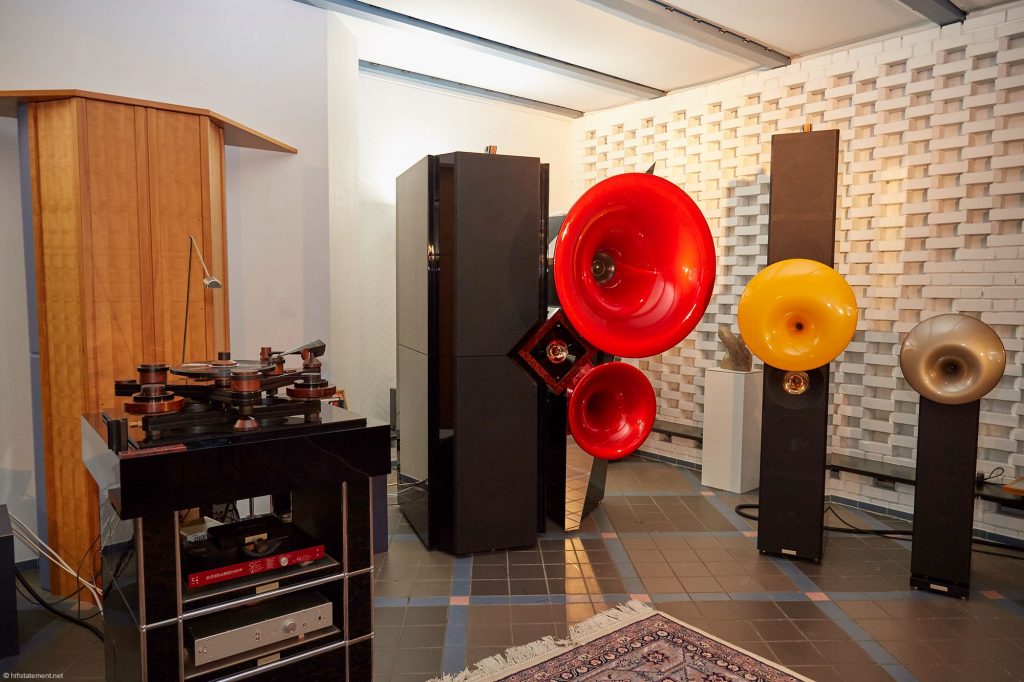
The equipment supporting the Laudatio turntable also carries the Artistic Fidelity converter and the prototype of Acapella's converter/preamp combo
Next we listened to an excerpt from a recording made by Hermann Winters way back in the early days of digital technology in the Mercator Hall in Duisburg. Approximately above the seventh row of spectators, he had suspended two Beyerdynamic large-diaphragm microphones from the ceiling, both switched to omnidirectional characteristics, while a Sony PCM-F1 took care of the conversion and a portable video recorder was in charge of the recording. Early digital technology or not, this recording would certainly do honour to any of nowadays' audiophile recording labels, if one considers how differentiated the rendering of solo instrument, orchestra and the not always completely silent audience was captured. However, many a cough gives somewhat the necessary vivid character to a live recording!
Although, as already described in my first article about Acapella, Alfred Rudolph and Hermann Winters enjoy my full trust—ultimately resulting in extremely heavy loudspeakers cladded in sandwich cabinets and self-twisted speaker cables of two times 25 square millimeters—I did not just ask once whether this recording had been supported by the one or the other spot microphone for the grand piano, or not. This, because it sounded so differentiated and three-dimensional, as if it had been given two additional microphones. But that doesn't necessarily mean that the grand piano didn't acoustically fit well into the room and the orchestra sound. According to my existing experience, such a detailed imaging of an instrument you only get when using the microphones in a very close-up position. Hermann Winter's recording and the Sphäron now make me more than open to conviction.
If you have the opportunity to listen to the Excalibur, dare to ask for this piece of music. As so often, in the end a raw, subsequently entirely unprocessed two-microphone recording—using omnidirectional microphones, Hermann Winters would deliberately add—sounds very credible and natural.
Finally, there's Johnny Cash with his guitar again, probably to show that the almost perfect illusion of spatiality within the recording made in the Mercator Hall is due to the microphone arrangement, and not caused by some peculiarity within the Sphäron's radiation characteristics. It's not uncommon that horn systems very much pretend to display vocalists with huge mouths and instruments in excessive size, which may be quite appealing at first glance, but this is not so with the Excalibur. Here, Johnny Cash and his guitar step onto the stage in their genuine size.
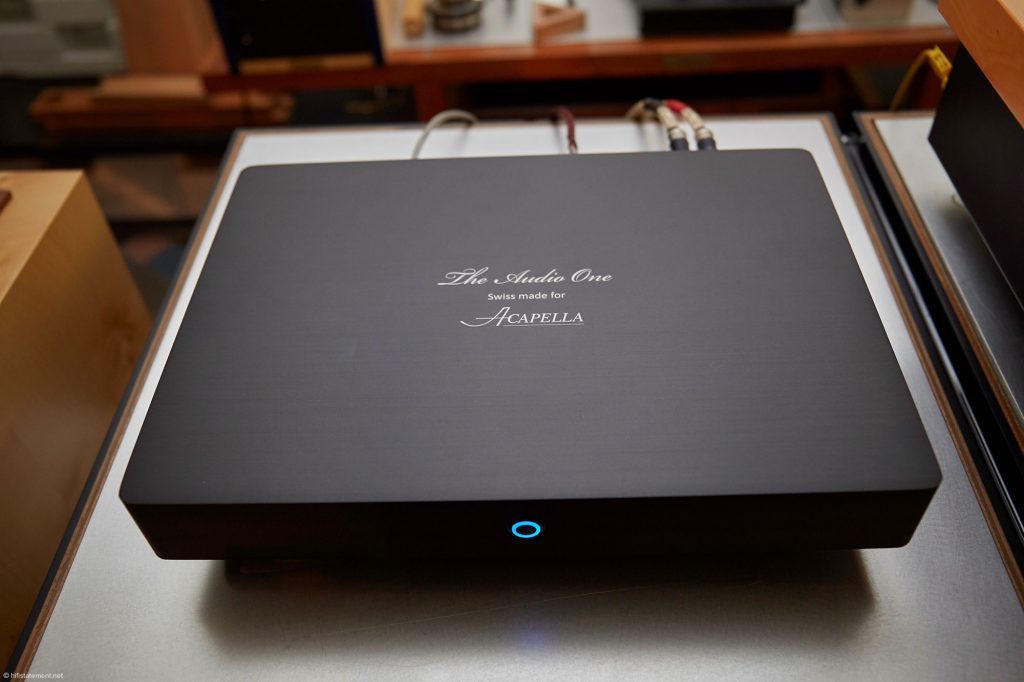
Acapella's new, moderately priced music server
Hermann Winters then had to leave for an appointment, so Alfred Rudolph took over. While we had a little chat about his latest recording projects, it appears to me that this subject seems to give him greater pleasure than to discuss the Sphäron's technical specifications. From his record collection he picks the sommelier-du-son issue sds 0015-1, which is Soyeusement by Michel Godard, treats it with squalane oil, and lets the Sphäron transport me to the Refectory of the Noirlac Abbey. I must say that I have never heard that space in such a size and the instruments within my own recording to such a three-dimensional extent before. But not only the music attracts our attention. Each time "Trace of Grace" was repeated, the performance got even smoother and more harmonious. With each pass, the stylus spreads the oil finer and finer throughout the groove. Even more apparent than these improvements are the tonal differences coming from the various wood inserts applied to the Laudatio's record clamp. Depending on the involved audio system, the tonality of the recording or your own personal taste, the sonic properties of the analogue source allow hereby to be fine-tuned. In the near future, the record clamp is going to be also separately available with three wood inserts for selection.
Meanwhile, my test albums had found their way into the hard drive of The Audio One. Its price of 5500 euros includes two SSDs with one terabyte each, and a high-quality D/A converter. At extra cost, also two terabytes each and a linear power supply are available. I will try to get The Audio One for a detailed evaluation to my listening room.
But let's switch to the pieces of music on the hard drive: I selected Keith Jarrett's "God Bless The Child," and I nearly get overwhelmed by the abundance of almost incidentally presented detail. I virtually "see" the grand piano in its original size right in front of me, enjoy how perfectly hi-hat and snare are spatially differentiated, and lead me to the boisterous groove of the trio. Do I still have to say that I have never heard this track better and more realistic before? Certainly not, and in order to ever enjoy my test albums again back in my music room at home, I deliberately refrain from listening to any other of my music. However, I would rather listen to Alfred Rudolph's recording of the Talking Horns. Even though they now are sourced from the server rather than from tape as they were years ago, the fascination caused by the Sphäron still is somewhat bigger than with the Poseydon. The big horn system simply plays in a more casual manner with almost unlimited dynamics. Yes, I know that I have written such lines already about the Poseydon. But today, I found out that there's a little more to be found.
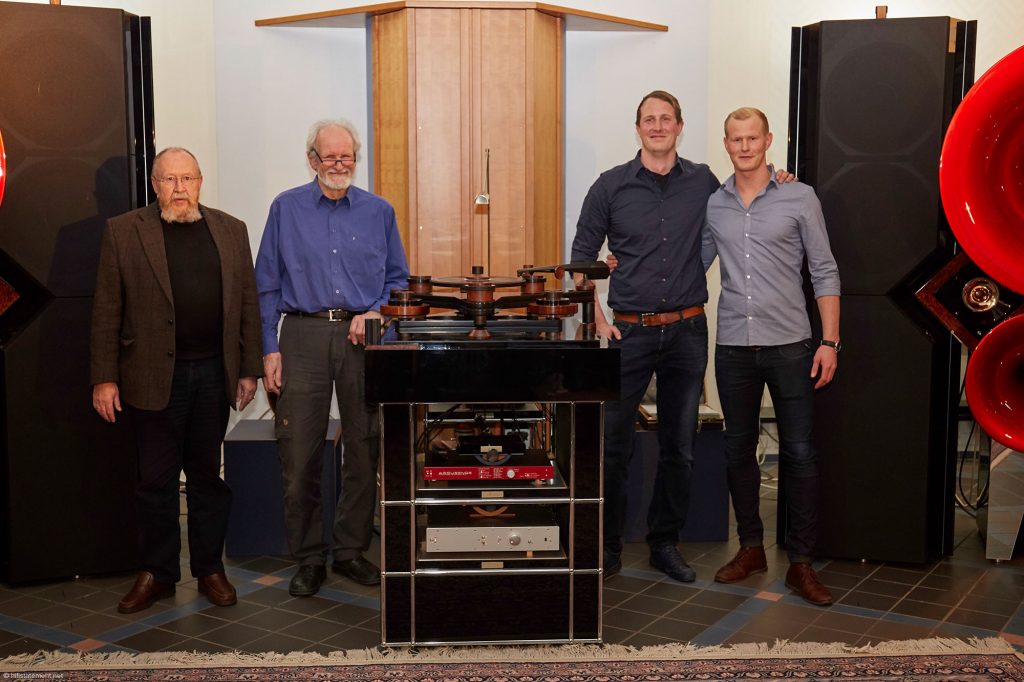
Acapella's inner circle (from left): Hermann Winters, Alfred Rudolph, Richard Rudolph, and Robert Rudolph
So far, the Sphäron had captured me above all with its immense abilities in terms of resolution, even at moderate levels, as well as with the realistic imaging of voices and instruments, but now I wanted to immerse myself into the dynamic capabilities of the horn system again—with "Lazy" from the album Deep Purple with Orchestra Live In Switzerland 2011. Don Airey indulges within the long intro a variety of Hammond sounds, before the band vehemently sets in. Even though I witnessed that evening when the recording in Montreux was made, I wouldn't ever arrogate to claim that the Sphäron exactly reproduces the sonic image experienced in the Stravinsky Hall. No one knows what the 96-channel SSL console and the mastering did to the band's sound.
But what is much more important is the fact that the Sphäron immediately evokes the emotions that turn this piece of music into something very special for me. Or, to put it more plainly and simply: I've never enjoyed music in a more pleasurable way than with the Sphäron at the Audio Forum. If you really want to experience what nowadays is feasible in terms of audio performance, do not miss the opportunity to listen to the Sphäron Excalibur by yourself. There is still time left for that!
Specifications
- Dimensions (H/W/D): 230/150/130 cm
- Sensitivity: 100 dB/1W/1m
- Power rating: 100 W; Impulse 1000 W (10 ms)
- Recommended amplifier power: from 15 W sinus/4 ohms
- Weight: 650 to 750 kg per system
- Room size: from 40 m²
- Price: from 500,000 euros
Acapella Audio Arts
Hermann Winters GmbH & Co. KG
Koloniestrasse 203
47057 Duisburg
Germany
+49 203 361222
Audio Forum opening hours
Fridays from 13:00 to 19:00 hours
Saturdays from 10:00 to 14:00 hours
All photographs by Dirk Sommer






